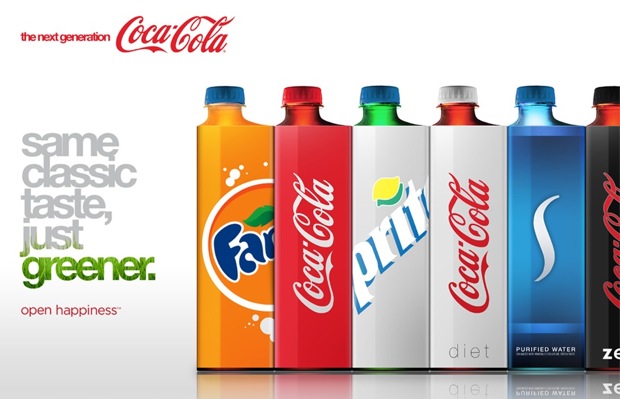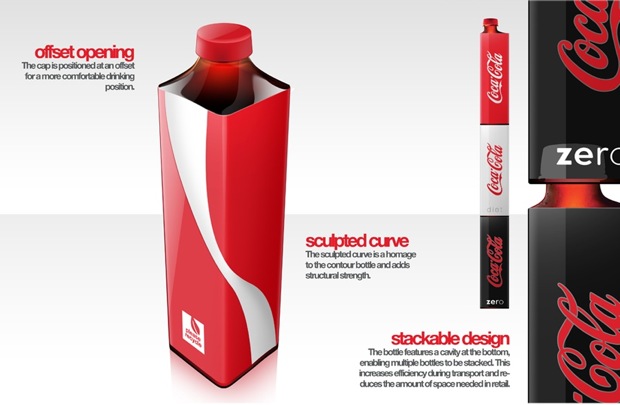Even the smallest change is beneficial, as can be witnessed from the company Kraft. This company came up with a more efficient design for the zipper on their cheese packaging. As seen below:
By
making this one small adjustment, they are saving more than a million
pounds on packaging every year. Just by changing the zipper!
Aaron Mickelson developed five clever concepts that makes sure no waste is left over once the packaging has playing its part. For example, he created packaging for a roll of bags for company Glad.
Aaron Mickelson developed five clever concepts that makes sure no waste is left over once the packaging has playing its part. For example, he created packaging for a roll of bags for company Glad.
The
next design is laundry detergent packaging for the company Tide.
“Pods” can be torn off and used one by one until there is simply
no packaging left. In this case, the product IS the packaging.
Yves
Béhar also recently developed the idea of replacing the traditional
shoe box for Puma with a reusable bag. The solution reduces the
amount of waste and carbon emissions. It also eliminates the use of
plastic carrier bags with its own handle. With this concept Puma will
consume 8,500 tons less of paper, save on 20 millions megajoules of
electricity, use 1 million litres less of fuel oil, save on 500,000
litres of diesel during transport and save up to 275 tons of plastic!
Brazilian burger chain Bob’s take the "no waste" concept even further by creating edible packaging! A biodegradable membrane has been developed, named "WikiCells", which draws inspiration from grape skins. These membranes can be washed - and eaten.
Brazilian burger chain Bob’s take the "no waste" concept even further by creating edible packaging! A biodegradable membrane has been developed, named "WikiCells", which draws inspiration from grape skins. These membranes can be washed - and eaten.
How
a product can be transported is also very important and plays a large
part in its carbon footprint. This is something that I will have to
consider with the packaging of my paint container too. Though the
appearance of the Coca Cola bottle has proven to be one of the most
recognisable objects in the world, designer Andrew Kim has introduced
a new design that works with sustainability in mind.
By
transforming the shape of the bottle and giving it a more square-like
appearance (he was influenced by companies like Fiji,
whose bottles are more rectangular) Kim has created a bottle that
uses shipping space more efficiently. The bottles can now be stacked
together, both horizontally and vertically. The outer packaging can
then be collapsed after their use, which also saves space when they
are transportation to the recycling centre. With this design, more
bottles can be fitted into the truck for transportation. This means
that less trucks will be needed to transport the bottles, amounting
in large savings of greenhouse gas emissions.
Personal thoughts:
Obviously, it is going to be harder to achieve such a result with paint, as paint has so many considerations that needed to be accounted for with its packaging. However, I feel that this research has made me more aware of what can be achieved through the use of packaging. I would like my packaging to be compact and perhaps stack-able, so that it can be efficiently placed into the trucks for transportation.
References:
http://www.fastcompany.com/1601616/whats-square-root-sustainability-coke-bottle
http://www.thedieline.com/blog/2013/11/13/what-makes-a-package-sustainable.html
http://www.thedieline.com/blog/2013/9/26/concept-the-disappearing-package.html
http://www.footballboots.co.uk/445-puma-pioneers-new-sustainable-packaging.html
http://www.thedieline.com/blog/2013/10/21/zero-waste-packaging.html
http://www.thedieline.com/blog/2013/11/13/what-makes-a-package-sustainable.html
http://www.thedieline.com/blog/2013/9/26/concept-the-disappearing-package.html
http://www.footballboots.co.uk/445-puma-pioneers-new-sustainable-packaging.html
http://www.thedieline.com/blog/2013/10/21/zero-waste-packaging.html










No comments:
Post a Comment